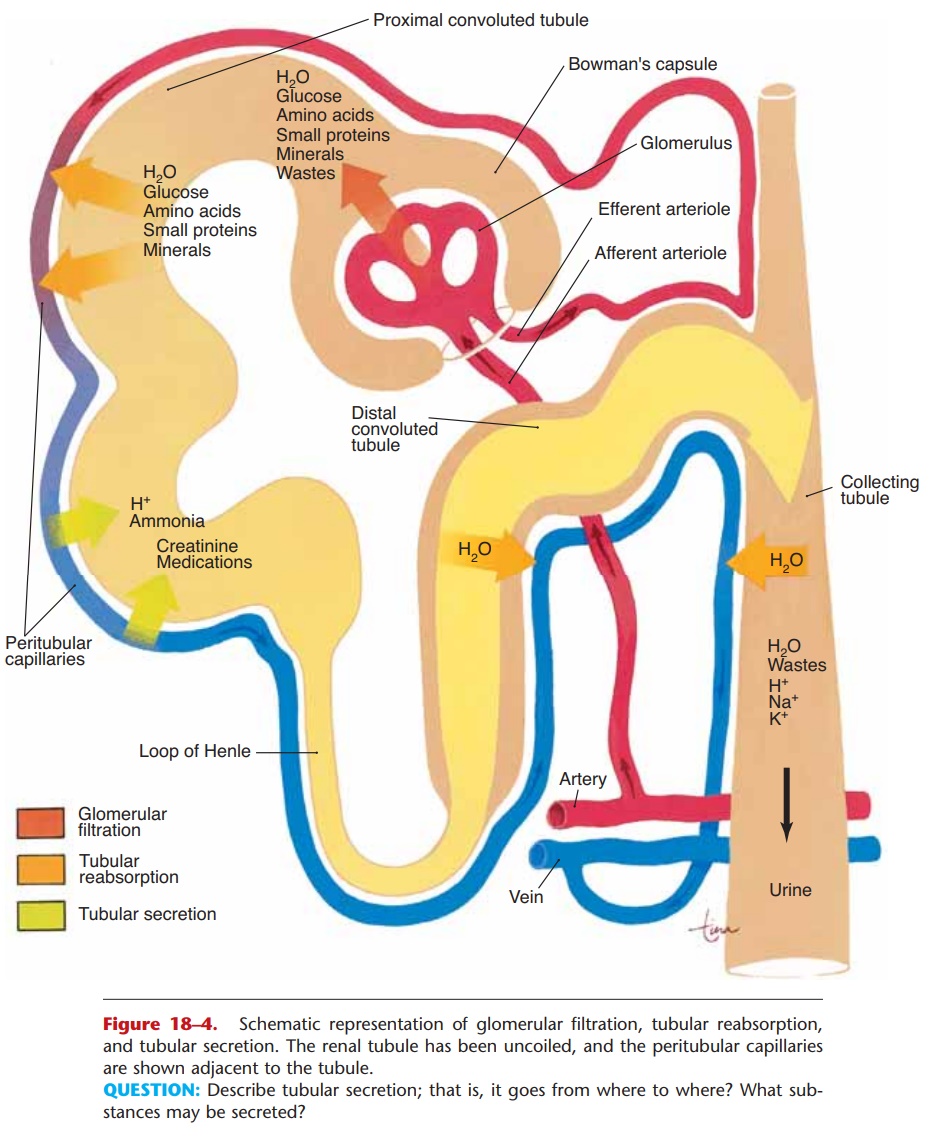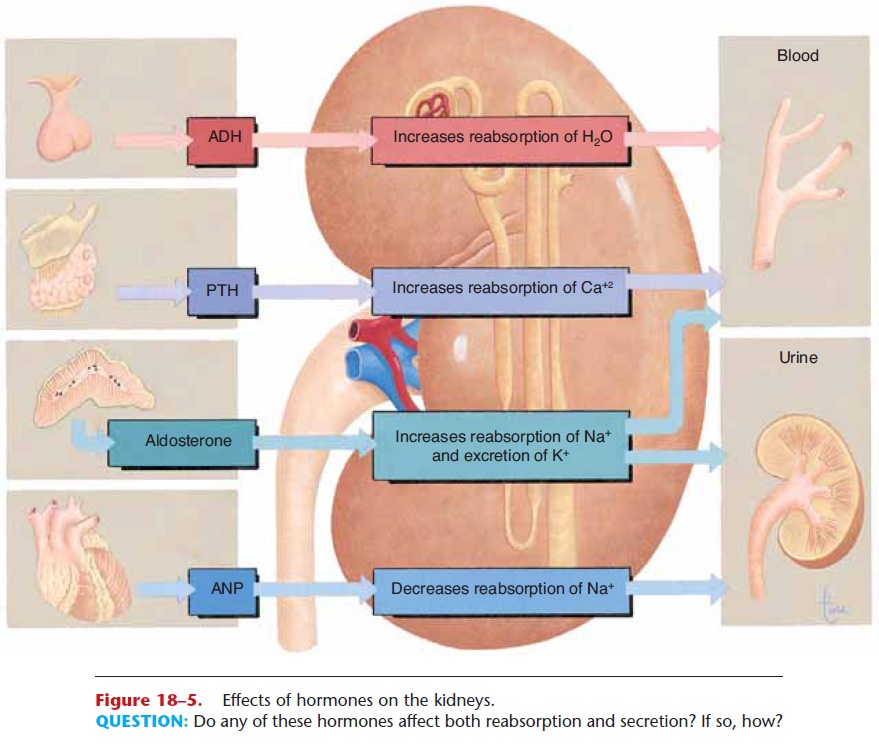Chapter: Essentials of Anatomy and Physiology: The Urinary System
Glomerular Filtration - Formation of Urine
GLOMERULAR FILTRATION
You may recall that filtration is the process in which blood pressure forces plasma and dissolved material out of capillaries. Inglomerular filtration, blood pressure forces plasma, dissolved substances, and small proteins out of the glomeruli and into Bowman’s cap-sules. This fluid is no longer plasma but is called renal filtrate.
The blood pressure in the glomeruli, compared with that in other capillaries, is relatively high, about 60 mmHg. The pressure in Bowman’s capsule is very low, and its inner, podocyte layer is very permeable, so that approximately 20% to 25% of the blood that enters glomeruli becomes renal filtrate in Bowman’s capsules. The blood cells and larger proteins are too large to be forced out of the glomeruli, so they remain in the blood. Waste products are dissolved in blood plasma, so they pass into the renal filtrate. Useful materials such as nutrients and minerals are also dis-solved in plasma and are also present in renal filtrate. Filtration is not selective with respect to usefulness; it is selective only with respect to size. Therefore, renal filtrate is very much like blood plasma, except that there is far less protein and no blood cells are present.

The glomerular filtration rate (GFR) is the amount of renal filtrate formed by the kidneys in 1 minute, and averages 100 to 125 mL per minute. GFR may be altered if the rate of blood flow through the kidney changes. If blood flow increases, the GFR increases, and more filtrate is formed. If blood flow decreases (as may happen following a severe hemor-rhage), the GFR decreases, less filtrate is formed, and urinary output decreases.


Related Topics